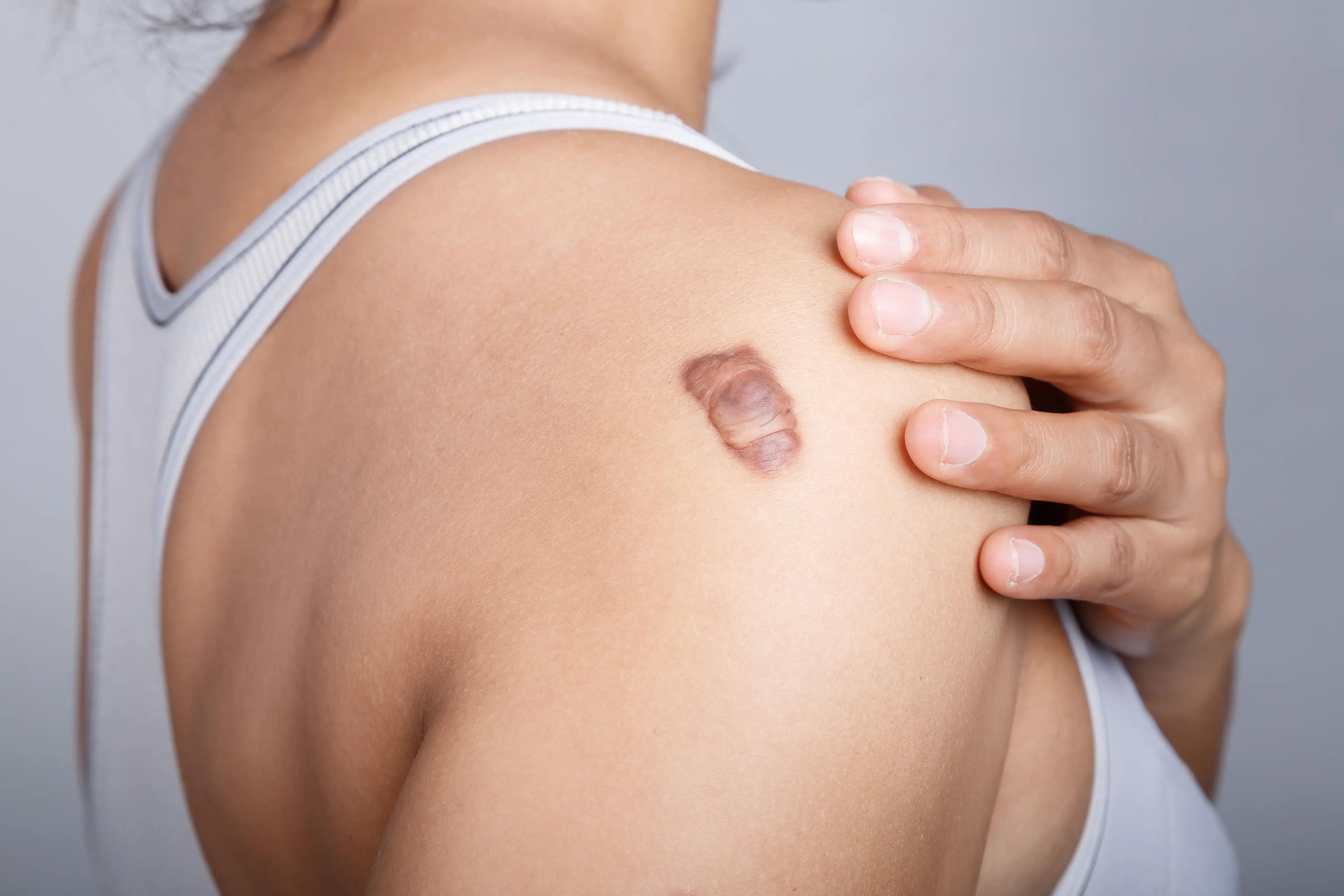- Case-Based Roundtable
- General Dermatology
- Eczema
- Chronic Hand Eczema
- Alopecia
- Aesthetics
- Vitiligo
- COVID-19
- Actinic Keratosis
- Precision Medicine and Biologics
- Rare Disease
- Wound Care
- Rosacea
- Psoriasis
- Psoriatic Arthritis
- Atopic Dermatitis
- Melasma
- NP and PA
- Skin Cancer
- Hidradenitis Suppurativa
- Drug Watch
- Pigmentary Disorders
- Acne
- Pediatric Dermatology
- Practice Management
- Prurigo Nodularis
- Buy-and-Bill
News
Article
First Human Trial Shows CBD’s UVA-Protective Benefits
Author(s):
The study saw a reduction of 2 major UVA-induced mtDNA deletions associated with skin photoaging.
Image Credit: © chokniti - stock.adobe.com

Although ultraviolet-A (UVA) is known to be a primary driver of photoaging and photocarcinogenesis, there are few available filters providing long-term protection against UVA.1 A recent study identified cannabidiol (CBD) as a promising prospective compound to mitigate damage associated with UVA exposure, noting its anti-inflammatory and antioxidant properties via regulation of NFR-2, HMOX1, and PPAR-y activity. Researchers behind the study found that topically applied nCBD cream reduced UVA-induced formation of a frequent mutagenic nuclear DNA base lesion and protected against mtDNA mutations associated with UVA-induced skin aging. This made this study the first trial to identify UV-protective capacity of CBD-containing topicals in humans.2
Adam Friedman, MD, FAAD, co-senior author on the study and chair of the department of Dermatology at The George Washington University School of Medicine and Health Sciences, told Dermatology Times, "the wealth of evidence supporting the use of CBD to manage a wide array of skin conditions has historically been at the bench, not bedside, hindering clinical translation and credibility.”
“Topical pre-treatment with nCBD cream reduced UVA-induced nuclear & mDNA mutations associated with UVA-induced skin photoaging. These findings are the first identification of UVA-protection by topical CBD in humans," said Brian Berman, MD, PhD, co-senior author on the study and co-director of the center for clinical and cosmetic research.
Methods
The double-blind, pilot clinical trial (NCT05279495) included 19 participants, aged 23 to 64. Participants were computer randomized and received pump cream containers with sufficient nCBD or vehicle cream (VC) for the treatment period. They were asked to apply nCBD or VC cream to randomized, blinded buttock sites twice daily for 14 days. After the treatment period, 4 cm2 156 within the treatment area of each buttock was irradiated with ≤3x MED-A. The study stated that 24 hours later, the sites were visually inspected for clinical comparison of erythema. Five 4-millimeter punch biopsies were collected from UVA and non-UVA-exposed treatment sites at each buttock, as well as an untreated control site ≥ 5 centimeters away from the treated left buttock.
Results
According to the study, 4 of the 19 (21%) participants had less observed erythema on CBD-treated skin compared to VC. Of the remaining participants, researchers stated that 47% (9/19) had equivalent erythema on both sides, 21% (4/19) had no observed erythema, and 2 participants (11%) had less observed erythema on the VC-treated side.
Researchers reported that nCBD-treated skin had reduced UVA-induced epidermal hyperplasia compared to VC skin (mean 11.3% change from baseline vs. 28.7%;p=0.01). Dyskeratotic and vacuolated keratinocytes, or “sunburn cells,” were infrequent; researchers stated less than 3 cells each were identified in 8 UV-exposed samples.
Histological and immunohistochemistry (IHC) staining for polyclonal 8-oxoguanine glycosylase (OGG1), a DNA repair enzyme for common UV-induced DNA lesions, was performed to assess for change in percentage of cells with nuclear and cytoplasmic OGG1 staining after UVA exposure. The study stated that nCBD-treated skin had a “significantly” lower UVA-associated increase in percentage of cells with nuclear and cytoplasmic OGG1 staining compared to VC skin. Researchers reported seeing no significant difference when comparing the percentage of cells with nuclear-only OGG1 expression.
Quantitative PCR was performed for mtDNA genes ND4 and ND1, to evaluate for 2 UV-associated mutations of mtDNA. Researchers stated that 7 out of 19 participants had detectable UV-associated decrease in ND4 (indicating to the study a “common deletion”) and 8 out of 19 had detectable UV-associated decrease in ND1 (indicating to the study a 3895bp deletion) in their VC group. Of these, the study reported that 6 participants had both mutations observed and were included in both analyses. The study stated that UVA-induced mtDNA gene deletion of ND4 and ND1 were “significantly” reduced by in vivo treatment with nCBD compared to VC.
Conclusion and Discussion
This study focused on the protective potential of CBD against UVA-induced DNA and mtDNA damage, finding that nCBD treated samples had less profound UV-related epidermal hyperplasia, a reduction in UVA-associated increase in premutagenic marker OGG1, and a reduction of 2 major UVA-induced mtDNA deletions associated with skin photoaging. Researchers suggested that future research could explore baseline levels of mtDNA in human skin to investigate whether a combination of photoprotective clothing and sunscreen should be recommended even on areas such as the thighs or buttocks. They also suggested future works should utilize an active control to assess whether nCBD has any additional protective benefit, and explore the utility of nCBD in darker skin tones.
“Having both a purposeful and effective means of delivery (for an ingredient like CBD full disclosure, which I co-developed as a medical student) matched with and by impactful quantitative data in humans, is central to the success of the cannabinoid space and I am thrilled that we have kicked started that engine with our study,” Friedman said.
References
- Guan LL, Lim HW, Mohammad TF. Sunscreens and photoaging: A review of current literature. Am J Clin Dermatol. 2021;22(6):819-828. doi:10.1007/s40257-021-00632-5
- McCormick E, Han H, Abdel Azim S, et al. Topical nanoencapsulated cannabidiol cream as an innovative strategy combatting ultraviolet a-induced nuclear and mitochondrial DNA injury: A pilot randomized clinical study. JAAD Int. 2024;22(24):02490-3.doi:10.1016/j.jaad.2024.06.088
Newsletter
Like what you’re reading? Subscribe to Dermatology Times for weekly updates on therapies, innovations, and real-world practice tips.






